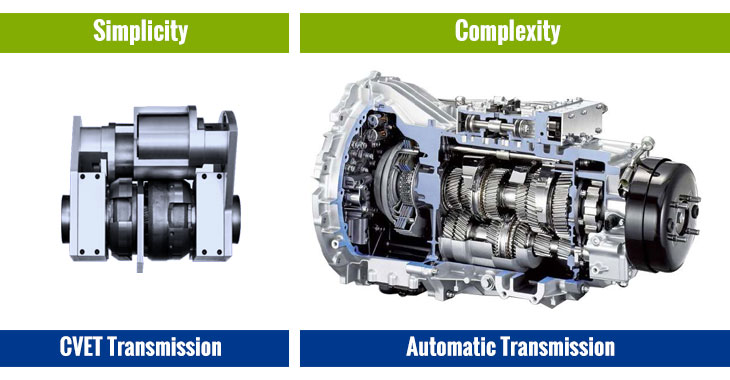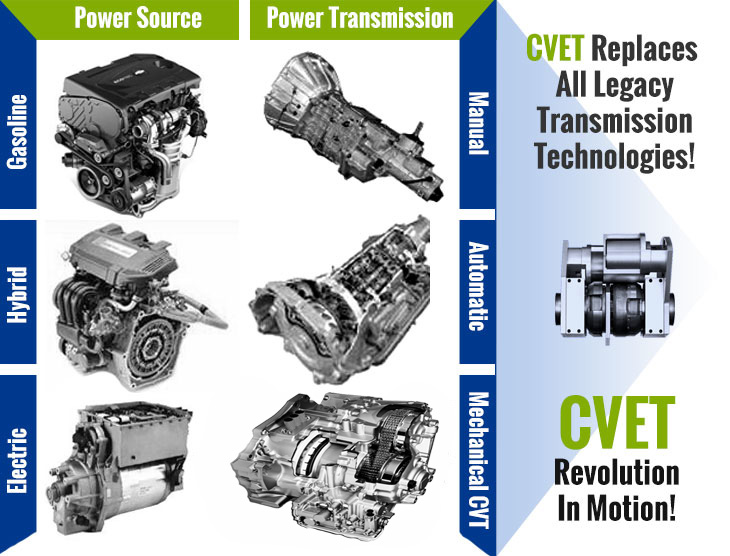Many of the major automotive manufacturers have introduced automobiles with mechanical CVTs. All of these vehicles have utilized a mechanically varying linkage to change the effective gear ratio between the input and the output.
However, the mechanical CVTs require significant forces to produce the continuously vary the transfer ratio between the input and output. There is only one source for these forces, and that is the enigne, which drives the hydraulc pumps to produce the foreces required to vary the CVT transfer ratios. These mechanical and hydraulic forces required to control the CVT reduce the overall CVT system efficiency.
The external mechanical and hydraulic forces required to change transfer ratios, as well as other mechanical losses, combine in mechanical CVTs to produce a net efficiency gain that is similar to that produced by a manual transmission.



